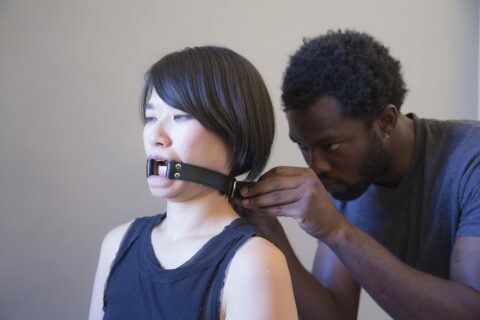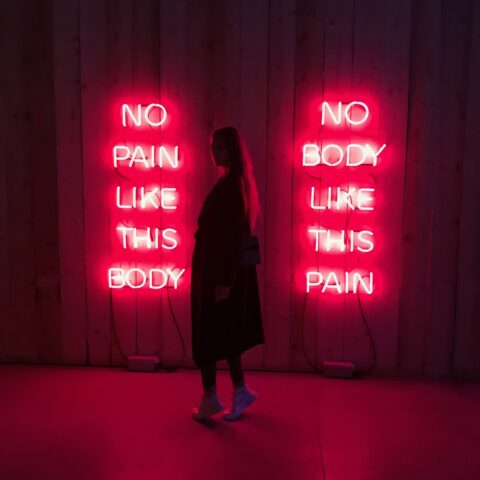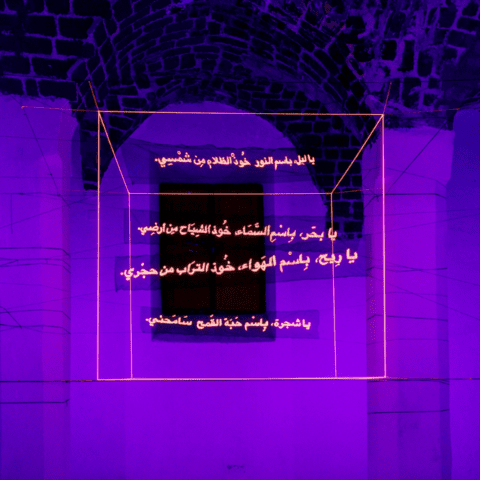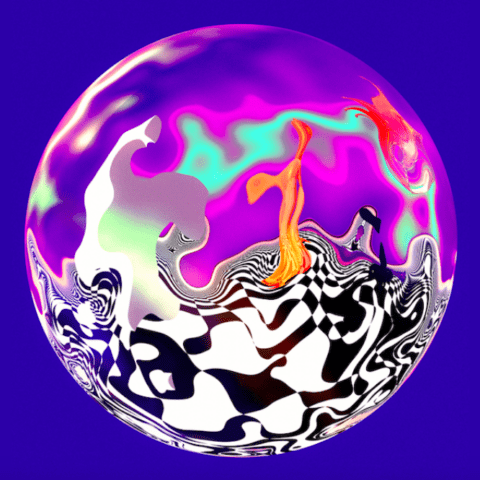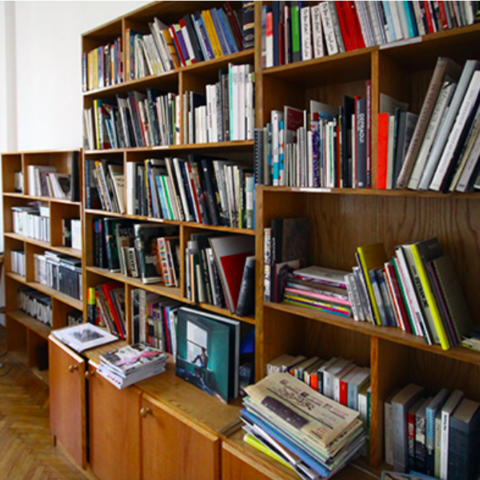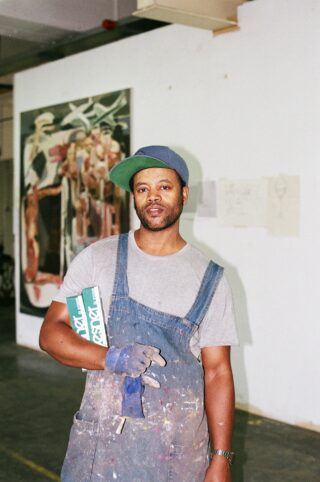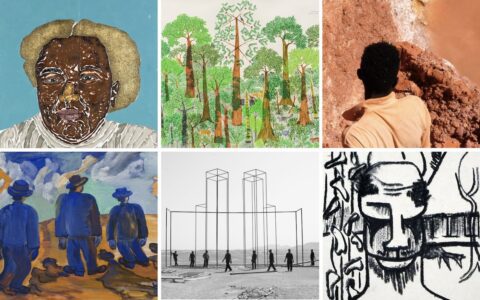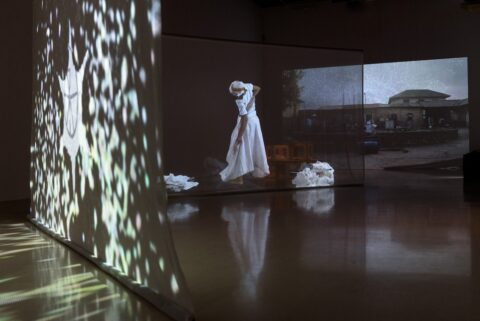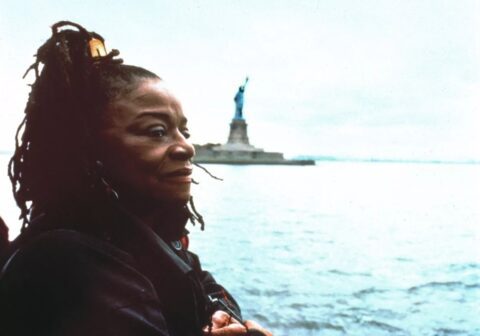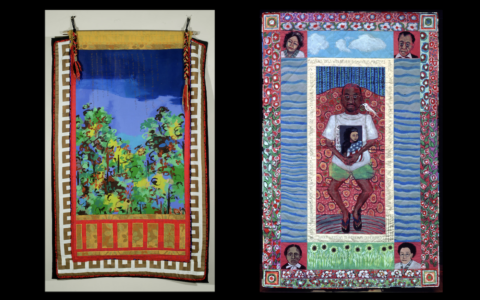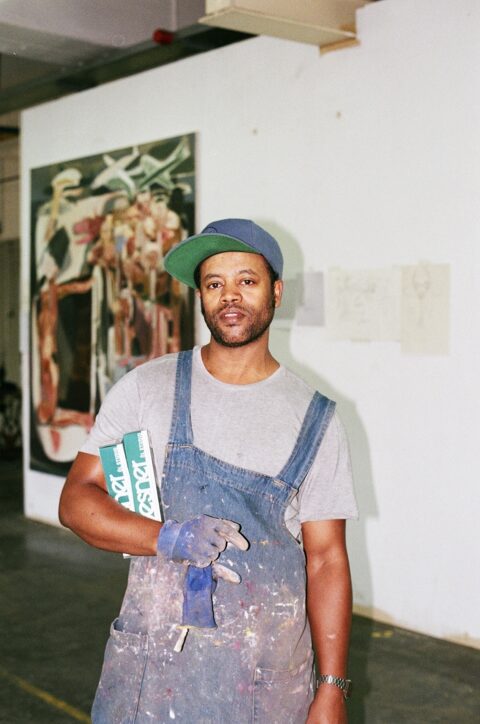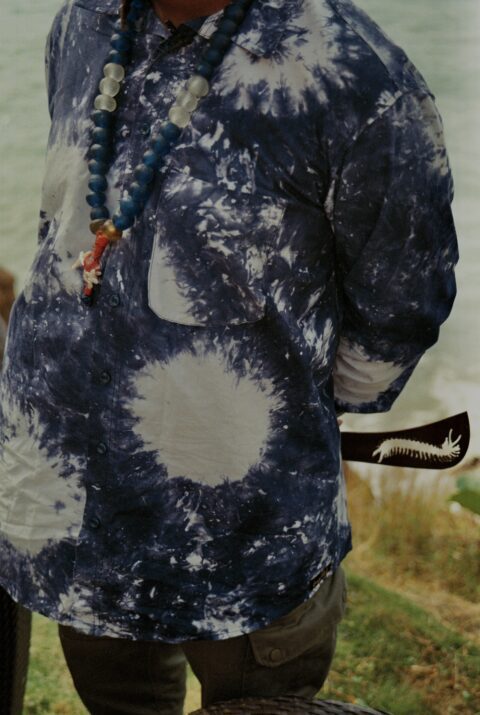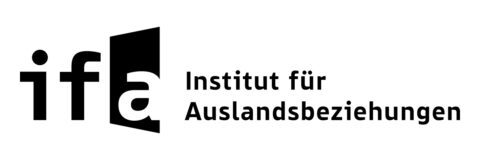Georgina Maxim’s personality and work can be a beautiful mesh, and her energy is always captured in her tapestries. She transforms used and found garments belonging to close relatives and friends into gigantic stories of stitches, memory, and healing. Like a painter using brushstrokes, Maxim avoids using a machine to sew and represent her impulses: She perceives stitches and hand movements as her unique mode of expression.

Georgina Maxim, Garden, 2017. Mixed Media Textiles. Image courtesy the artist and Sulger-Beul Gallery.
The artist commenced her career as a painter in the early 2000s and later did Cook the Doormat body of work which included ten Aprons displaying stitches. Each piece was given a provocative title reflecting how society has dimmed the light for women through constructing compulsory places for them to stay in – guarding a home life while often also having to prove themselves at work. Maxim shifts our imagination of aprons by depicting them as items of vulnerability, translating perceptions of femininity. The aprons thus seem to be sarcastic representations of the female worker, who has to be resilient. The analogy of the doormat, has a rare perspective on how society objectifies women. It speaks of how women are kept around to serve, but rarely given admission to enter the inside space, to sit at the table to make decisions.
Despite their almost abstract look, Maxim’s works invite viewers to take a journey from the first owner of the garment through the transformations that develop out of the thousands of stitches and dozens of hours that accompany each piece. In the current world of accumulation and industrialization, where artists get caught up in an urgent need to produce, what are the possibilities for the likes of Maxim, for whom one artwork can take six months of her time?

Georgina Maxim, Masiwa Tsero 2016, Mixed Media textiles and basket. Courtesy the artist.
For Maxim the details of her process are paramount – the frustrations, the joy when the work listens to her, the ability to highlight stitches. Although it has taken a while for her art to gain currency, Maxim remains optimistic owing to the boldness and resilience of her imagination. According to her it takes being genuine, passionate, and true to one’s art. She balances the duties of a mother, wife, student, artist, and arts manager, and it is fascinating to observe how that puzzle unravels in everyday life.
Martha Kazungu: Tell us about your background, how and when you started working as an artist.
Georgina Maxim: It all started in my early days at a girls’ school in which I studied many years ago. It was there that I got the confidence to choose art over fashion and fabrics or food and nutrition. Today I seriously think those subjects should have been jointly taught as one and there should have been a way to term all of them together. Today I apply them in all the things that I enjoy doing, because to me they are all forms of art. I studied creative art and design at Chinhoyi University and came out as an art teacher and gallery assistant. Today I try to make sense of art, artists, the city and the country through curatorial projects and through my own works at [art space] Village Unhu, based in Harare.
MK: Tell us what your work is about and what informs the medium you have chosen.
GM: Sewing, stitching, knitting, weaving, and applique are all granny manners. It is as if they are of a past time and yet they also celebrate alone times in a contemporary way – the ability to have serious patience and endure the monotony of the stitch. It is how my work is and I enjoy it. There seems to be no other way of expressing the issues of memory than using textile medium.

Georgina Maxim, Mhingo, When you come back carry me, 2017. Mixed Media Textiles. Courtesy the artist and Sulger-Beul Gallery.
MK: What is the function of Village Unhu in Harare? And how does it synchronize (or not) with your individual career?
GM: Village Unhu is a space that was created out of a need. Misheck Masamvu and I provide studio spaces to artists, workshops, residency programs, and exhibitions as often as possible and as creatively as possible. Therefore it is a safe haven in the city. One can visit to converse, to enjoy a meal or a tea, to be inspired, to look, or even to go away angry – Village Unhu has the possibility to do all that. But I get most from the fact that it’s a community of shared dreams and aspirations.
MK: In the recent past, your work and career has steadily progressed. For example you were accepted for a masters program in Bayreuth, nominated for the Henrike Grohs Art Award, and you have been named as one of four artists of the Zimbabwe Pavilion at the Venice Biennale. How are you coping with all this?
GM: I am far from coping. I am far from managing. I still have to be a wife and a mother, but I get up every morning and I do what I can. I am no machine but making a timetable and sticking to it, not forgetting to be alone and not lonely, is the best. All these are opportunities that have been lined up by the angels that have seen it fit, and that know I can handle them. The only thing to do is to not disappoint them.
Georgina Maxim was born 1980 in Harare, Zimbabwe. She lives and works between Bayreuth, Germany and Harare, Zimbabwe. Her work functions in part as meditation for the artist. As self-healing and self-recognition, hours spent alone but not lonely and working in the monotony of the same thread, finding only variation in the next colour. The colour and stitch can and may be translated into and as cicatrices of every little scar, laughter and stitch. It serves as memory of the owner of the dress and remaking the past into new. Maxim is currently furthering her studies in Bayreuth, Germany yet returns to Zimbabwe regularly as co-founder of Village Unhu collective and open studio in Harare.
Martha Kazungu is a curator and writer from Uganda. She is currently pursuing a master of arts in African Verbal and Visual Arts at Bayreuth University, Germany.






